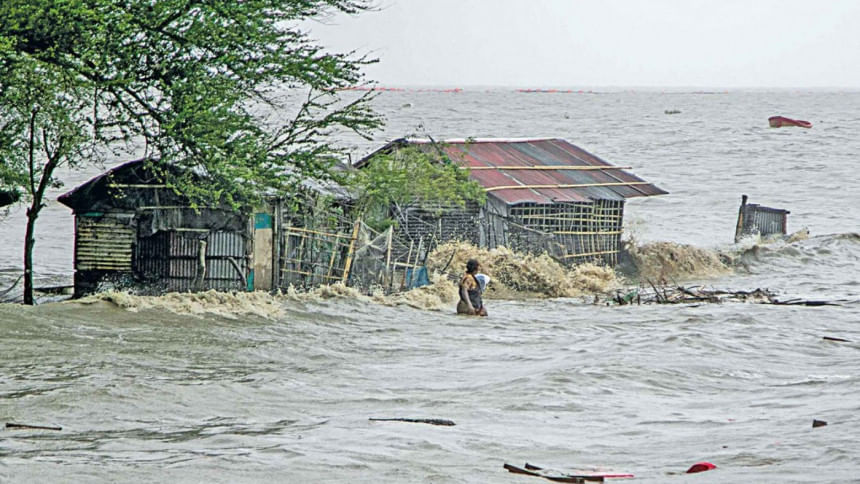After the cyclone, coastal people are still in distress

According to a report published by The Daily Star yesterday, people of coastal regions are still in government shelter homes where they had gone before cyclone Yaas was about to strike the region. They cannot go back to their houses, which are submerged under rising levels of saline water.
It is disappointing to know that while thousands of people on the coast are suffering from acute food and safe drinking water crisis at cyclone shelters, the government has allocated only Tk 3 lakh in cash, 10 tonnes of rice and a mere 700 packets of dry food for them. This is grossly inadequate and immediate food and cash relief must be significantly increased and given to alleviate the suffering of these people.
Another immediate need is repairing the embankments as quickly as possible before further damage is caused by the saline water. Several hundred people in Koyra upazila are voluntarily working to repair embankments. While the executive engineer of Satkhira's Water Development Board (WDB) claimed that government authorities have taken initiatives to repair the dam in Koyra, the locals have painted a different picture and are appealing for government initiative in this endeavour.
People from Koyra upazila in Khulna (around 5,000) and Kalapara upazila in Patuakhali have been the worst victims of the cyclone, which went through the Bangladesh coast on May 26, 2021. A huge amount of crops in Pirojpur have also been affected by a tidal surge. Entire areas of mostly coastal villages are still underwater. Road communications in these villages are totally suspended, and while the people of these areas have to move from one place to another, they are doing so either by walking through the water or traveling by boats.
Crops have also been badly affected. According to information received from Mathbaria upazil in Pirojpur, 80 percent of Aush paddy seedbeds and around 50 percent of summer vegetables have been damaged due to floods created by cyclone Yaas.
Nobody can prevent cyclones, but the damage caused by them can be minimised. The present embankments, dams, dikes and other infrastructure have to be critically assessed and where needed, urgent steps have to be taken to repair or rebuild them quickly. The government, moreover, has to initiate effective rehabilitation programmes to build new homes for those whose homes have been destroyed, along with their belongings. Cash relief should be given so that these families can survive until the crisis period is over. Farmers have to be helped financially to recover from their losses. Lastly, the role of local governments and the communities should be well-coordinated, so that whenever a crisis strikes, everyone can face that challenge together.

 For all latest news, follow The Daily Star's Google News channel.
For all latest news, follow The Daily Star's Google News channel. 



Comments